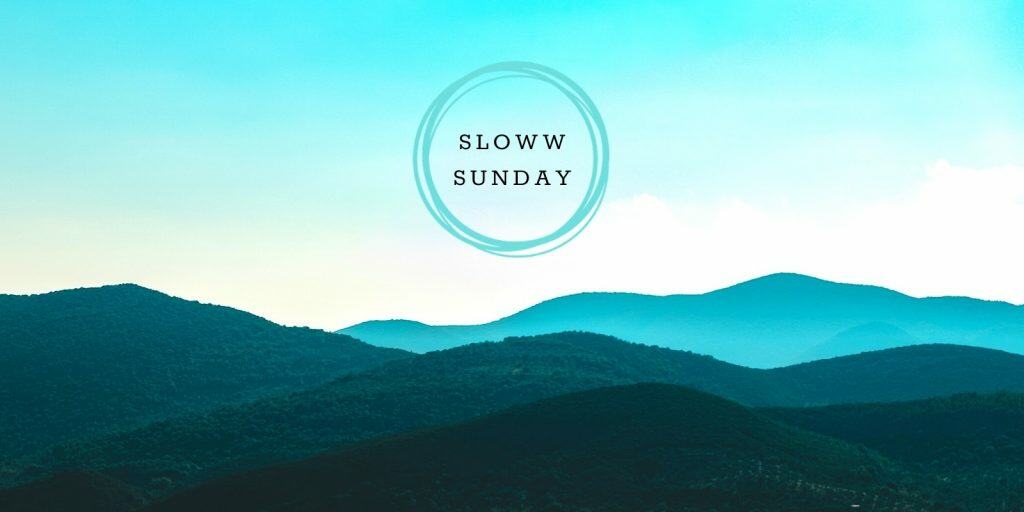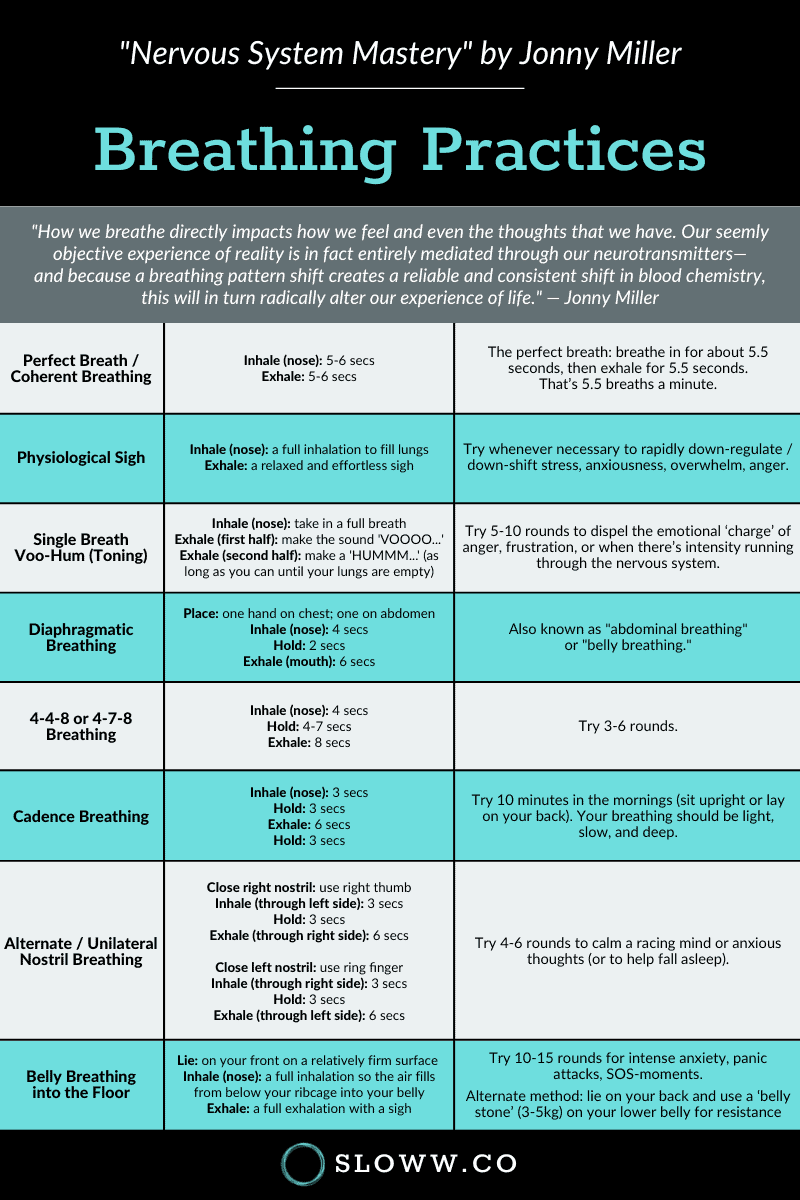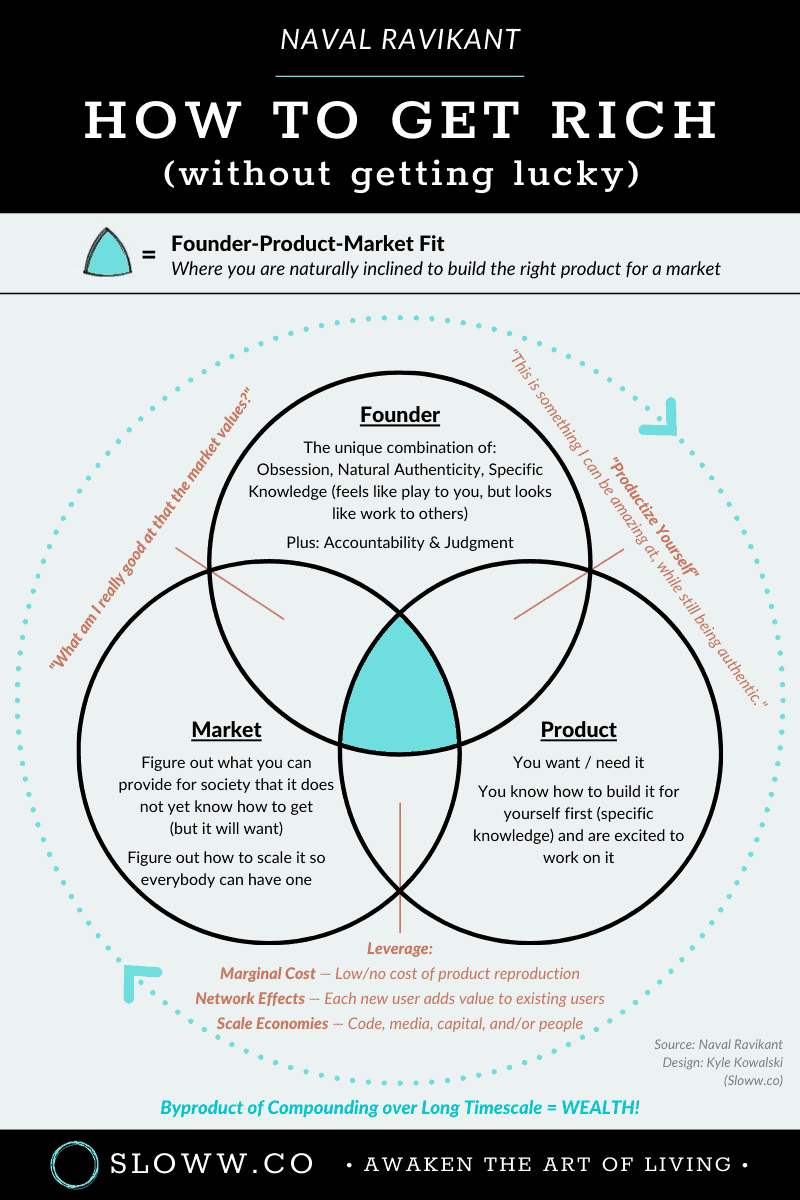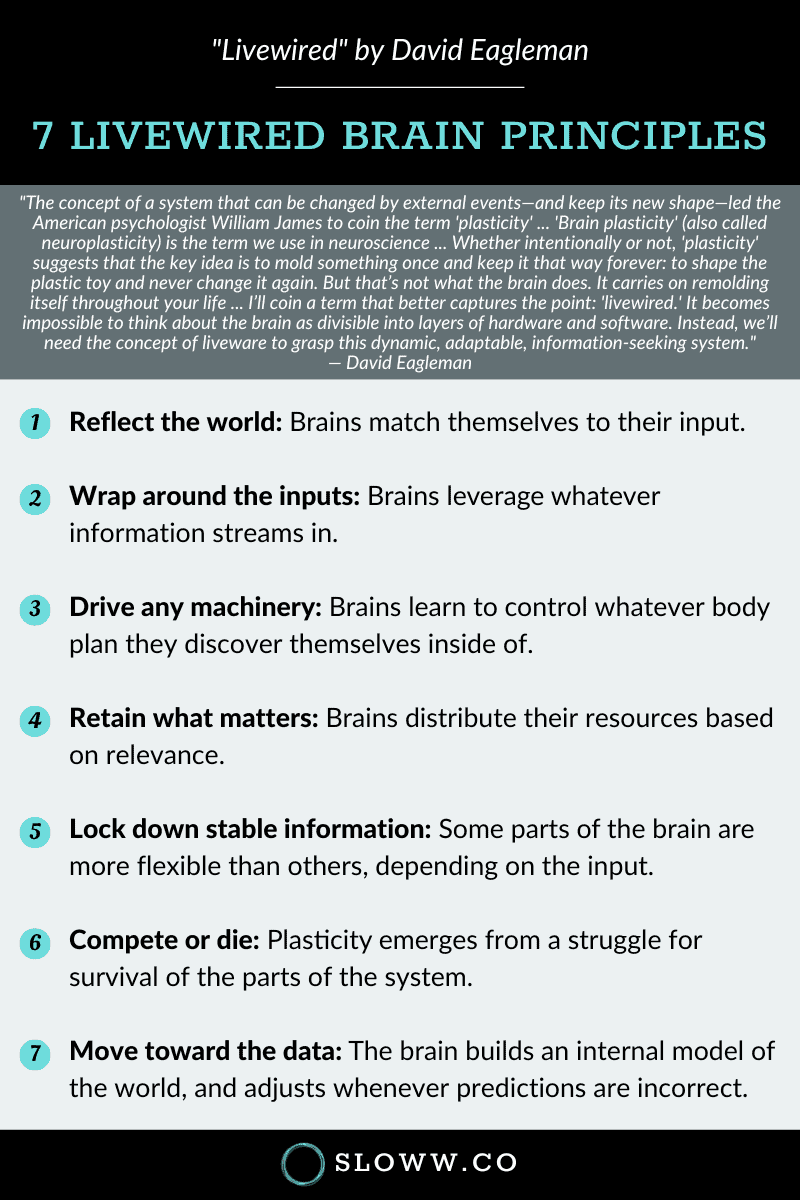Sign up to get the Sloww Sunday newsletter via email for free:👇

Sloww Sunday Newsletter 136 (Mar 12, 2023) — Art of Learning, Livewired Brains, Solopreneurship, & More
Sloww Sunday shares creations from Sloww along with curations of fascinating finds to 10,000+ students of life. If you enjoy this issue, please help grow Sloww by forwarding the email version of this newsletter to other lifelong learners.
📚 Lifelong Learning
The Art of Learning by Josh Waitzkin
This is a great read, and the book summary turned out better than I expected (I was initially worried about it because the lessons are so intertwined with Josh’s personal storytelling). The summary covers: passion & personality, intelligence & intuition, mastery & recovery, adversity & resilience, balance & flow, the Tao & tai chi, and more.
“What I have realized is that what I am best at is not Tai Chi, and it is not chess—what I am best at is the art of learning. This book is the story of my method.” — Josh Waitzkin
🌎 Lighter Living
Nervous System Mastery
I’ve mentioned the NSM course from fellow creator and friend Jonny Miller a couple times lately, but I just learned he’s limiting seats in the upcoming cohort that begins April 10th. There are already 400+ applications, but only 250 seats are available. So, if you’re genuinely interested, don’t wait too long to join. Also, don’t forget you can get $100 off lifetime access when you mention Sloww in the application process and use code SLOWW at checkout here.
Why did I take the course?
1. If you haven’t heard Jonny’s TEDx Talk, start here.
2. Jonny has personally spent thousands of hours researching, training, and mentoring—along with tens of thousands of dollars (quite literally)—to become a nervous system specialist.
3. I hoped the course would fill in gaps in my current knowledge in less time. For instance, the nervous system wasn’t on my own personal learning roadmap anytime soon, so I saw NSM as a “shortcut” instead of me venturing out into the internet on my own and learning about the nervous system from scratch. I wanted to learn some practical things to apply now as well as plant some seeds that I can explore more in the future when I do eventually get around to learning about the nervous system in more detail. I’m happy to report that the course delivered a great balance of theory and practice, and I published a 🔒Premium summary of my learnings.

Explore more: How do I design a lighter life? (Sloww Stage 1)
🧭 Deeper Purpose
Taking the leap into Solopreneurship
I receive a lot of questions about pursuing solopreneurship. Years into the journey, I still find myself referencing and recommending the entrepreneurial wisdom of Naval Ravikant:
- “The Almanack of Naval Ravikant” (Book Summary)
- Naval Ravikant: 15 Timeless Thoughts & 50 Quotes on Peace, Happiness, the Meaning of Life, & More
- “How to Get Rich (without getting lucky)” by Naval Ravikant (Summary & Infographic)
For the most comprehensive guide on the planet: 🔒Naval Ravikant Synthesis: How to Build Wealth by Being Yourself (+ Infographics)

Explore more: How do I find higher purpose (Sloww Stage 2)?
Get the eBook: Ikigai 2.0: A Step-by-Step Guidebook to Finding Life Purpose & Making Money Meaningfully (+ Bonus Workbook)
🧠 Mental Wealth
Livewired by David Eagleman
I read neuroscientist David Eagleman’s book Livewired (Book Summary) and absolutely loved it. I highly recommend reading it in full if you’re interested in how the brain works.
Here’s one excerpt to keep in mind:
- “From the point of view of your neural networks, what does it mean to descend into pattern and habit? Imagine two towns a few miles apart. People interested in caravanning from one settlement to the other take all possible paths: some travelers walk the scenic route along the ridgetops, some prefer the shade of the cliffside, some move among slippery rocks by the river, and others take the riskier but faster route through the woods. With time and experience, one route proves more popular. Eventually the path becomes grooved where the most people have walked, and it starts to become the standard. After some years the local government lays down roadways. After some decades, this expands into highways. Broad optionality reduces to the standard. Similarly, brains begin with many possible routes through the neural networks; with time, the practiced pathways become difficult to exit. Unused paths become thinned away. Neurons that can’t find success with the world eventually fold up shop and commit suicide. Through decades of experience, the brain comes to physically represent the environment, and your decisions follow the remaining, hard-paved paths. The upside is that you end up with lightning-fast ways of solving problems. The downside is that it’s harder to attack problems with wild unstructured inventiveness. Beyond the diminishing optionality in the pathways, there is a second reason that older brains are less flexible: when they change, they do so only in small spots. In contrast, baby brains modify across vast territories. Using broadcast systems like acetylcholine, infants transmit announcements throughout the brain, allowing pathways and connections to modify. Their brains are changeable everywhere, slowly coming into focus like a Polaroid photograph. An adult brain changes only little bits at a time. It keeps most of its connections locked into place, to hold on to what has been learned, and only small areas are made flexible via a combination lock of the right neurotransmitters. An adult brain is like a pointillist artist who modifies the hue of only a few dots in an almost-finished painting.” — David Eagleman (Livewired)

Explore more: How do I master the mind (Sloww Stage 3)?
Get Mini Mind: 365 Daily Emails of Bite-Size Brain Food
☯️ Timeless Wisdom
The Ultimate Art of Living
This is it.
According to Eckhart Tolle (The Power of Now | A New Earth | 🔒Premium Synthesis):
“There are three words that convey the secret of the art of living: One With Life. Being one with life is being one with Now. You then realize that you don’t live your life, but life lives you. Life is the dancer, and you are the dance.” — Eckhart Tolle
According to Anthony de Mello (Awareness | The Way to Love | 🔒Premium Summary):
“God is viewed as the dancer and creation as God’s dance. It isn’t as if God is the big dancer and you are the little dancer. Oh no. You’re not a dancer at all. You are being danced! … To lose the self is to suddenly realize that you are something other than what you thought you were … You thought you were the dancer; you now experience yourself as the dance.” — Anthony de Mello
According to Ramana Maharshi (Be As You Are | Who am I? | 🔒Premium Summary):
“The radio sings and speaks, but if you open it you will find no one inside. Similarly, my existence is like the space; though this body speaks like the radio, there is no one inside as a doer … The present difficulty is that man thinks he is the doer. But it is a mistake. It is the higher power which does everything and man is only a tool … God is making me the channel of this service; he is the doer and I am the instrument … Find out to whom free will or destiny matters. Find out where they come from, and abide in their source. If you do this, both of them are transcended. That is the only purpose of discussing these questions. To whom do these questions arise? Find out and be at peace.” — Ramana Maharshi
In Stephen Mitchell’s version of Lao Tzu’s Tao Te Ching, Mitchell explains:
“Nothing is done because the doer has wholeheartedly vanished into the deed; the fuel has been completely transformed into flame. This ‘nothing’ is, in fact, everything. It happens when we trust in the intelligence of the universe in the same way that an athlete or a dancer trusts the superior intelligence of the body.”
As an example, there’s a Tao Te Ching passage that says, “Therefore the Master acts without doing anything and teaches without saying anything.” What does that mean? Mitchell says:
“Her actions are appropriate responses. Thus they are effortless … She never has to make a decision; decisions arise by themselves. She is like an actress who loves her role. The Tao is writing the script.”
All in all:
“This is a paradigm for non-action: the purest and most effective form of action. The game plays the game; the poem writes the poem; we can’t tell the dancer from the dance.” — Stephen Mitchell
PS: You don’t have to be into spirituality to get all this. David Bohm was a scientist, yet he was still able to grasp this through his 25+ years of conversations with Jiddu Krishnamurti (see Thought as a System).
Explore more: How do I embody wisdom (Sloww Stage 4)?
Share: Sloww Sunday currently sends to 10,000+ students of life each week. If you enjoyed this issue, please help grow Sloww by forwarding the email version of this newsletter to some friends and family. It’s free for them to subscribe here.
Support: Sloww is a one-human labor of love (it’s just me over here 👋). Your support keeps the site ad-free and invests in me while you invest in yourself—a true win-win! There are free and financial ways to support.
Speak: Have something you want to say, or just want to say hi? It’s always greatly appreciated. Just reply to this email or reach out socially.
Go with the Sloww,
Kyle Kowalski
Synthesizer & Solopreneur




